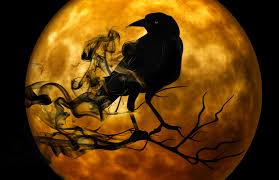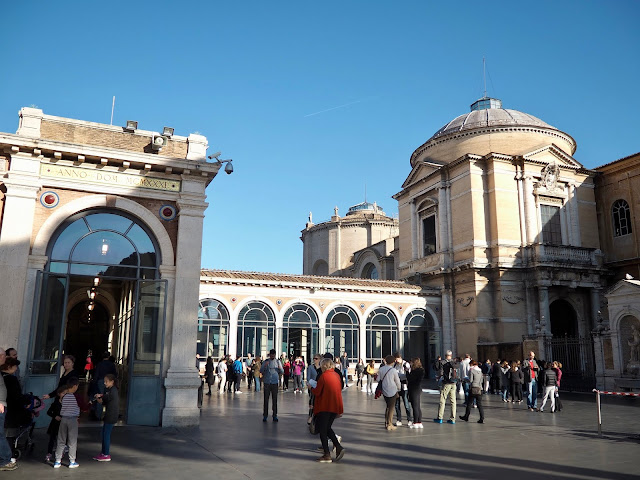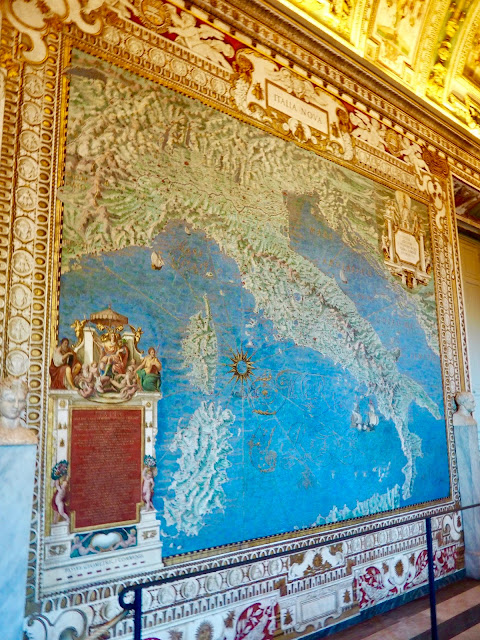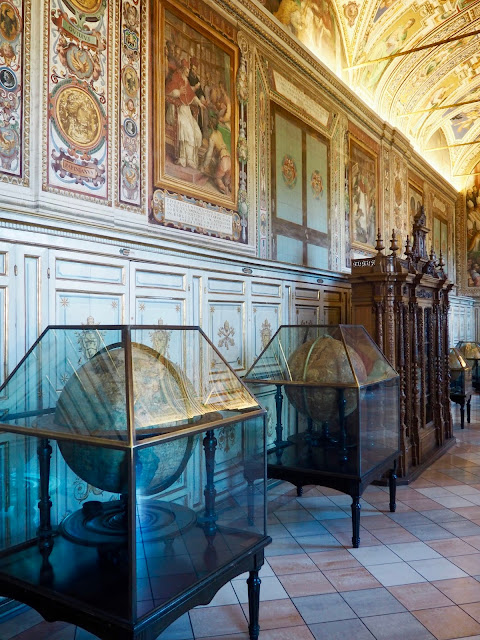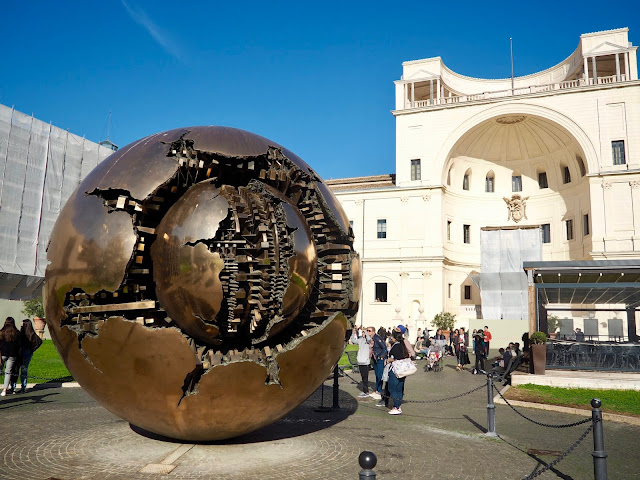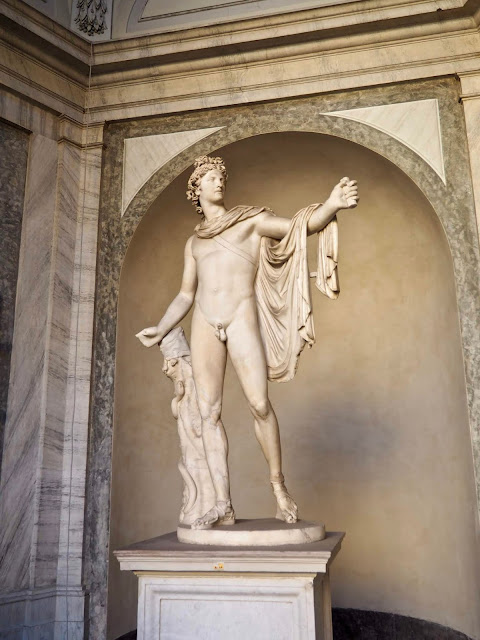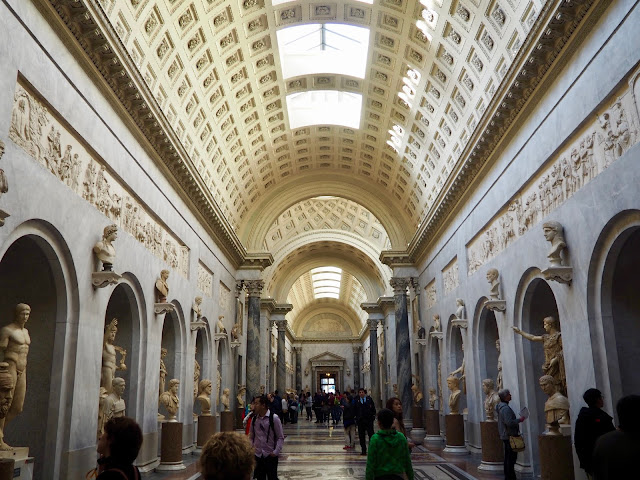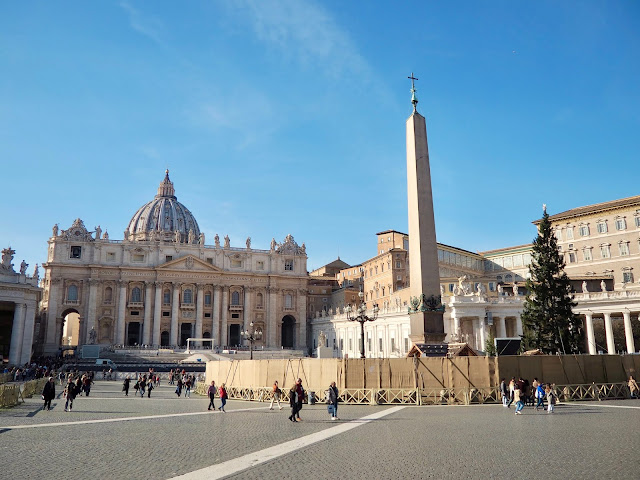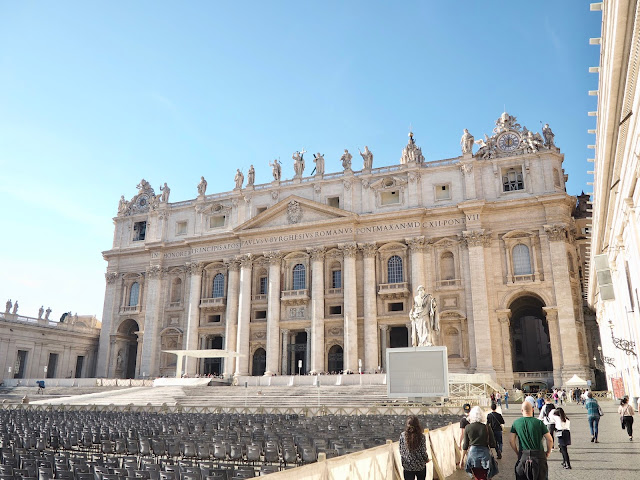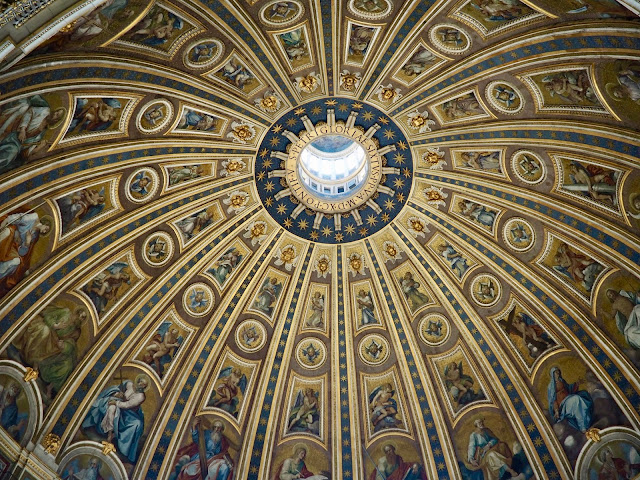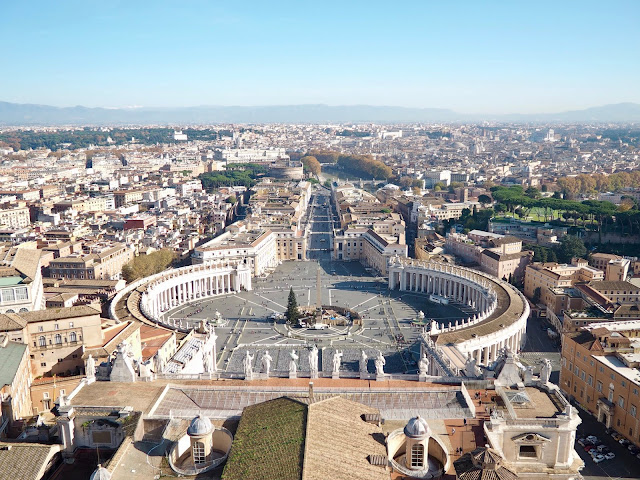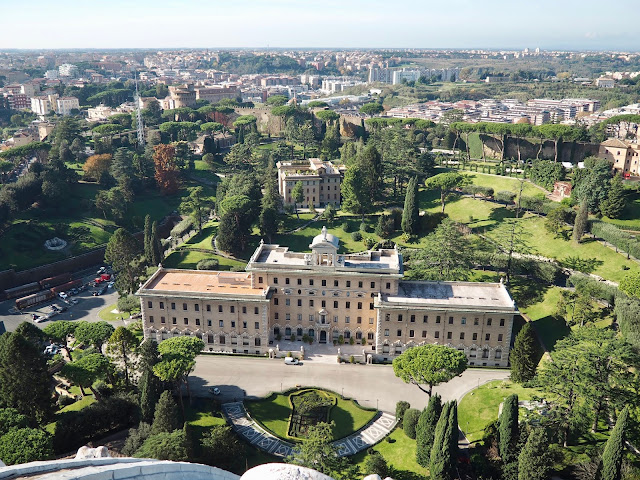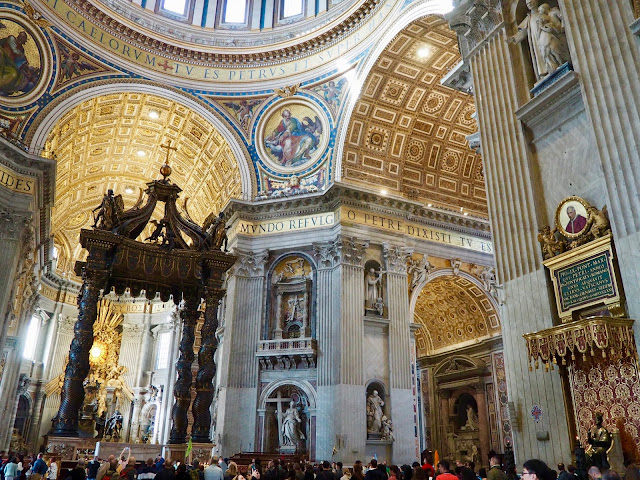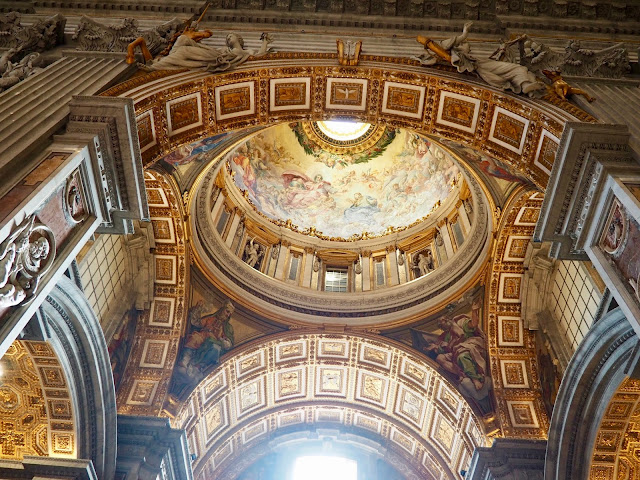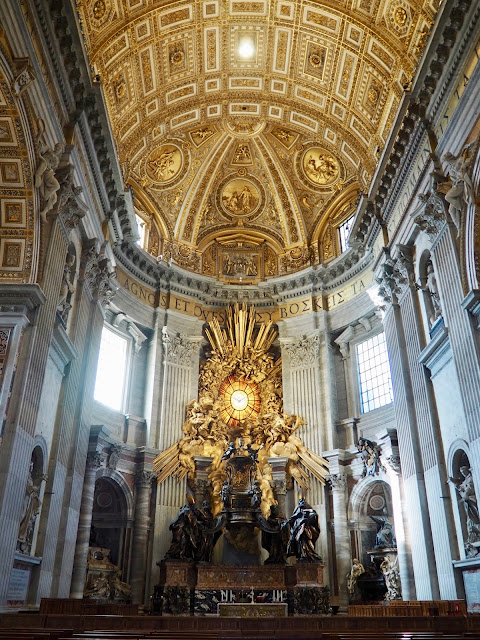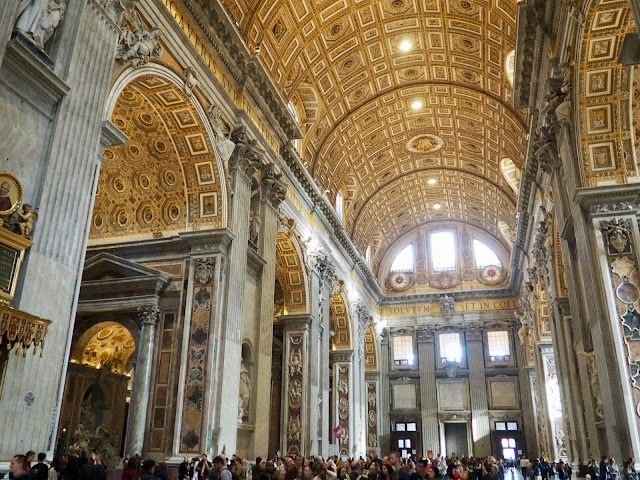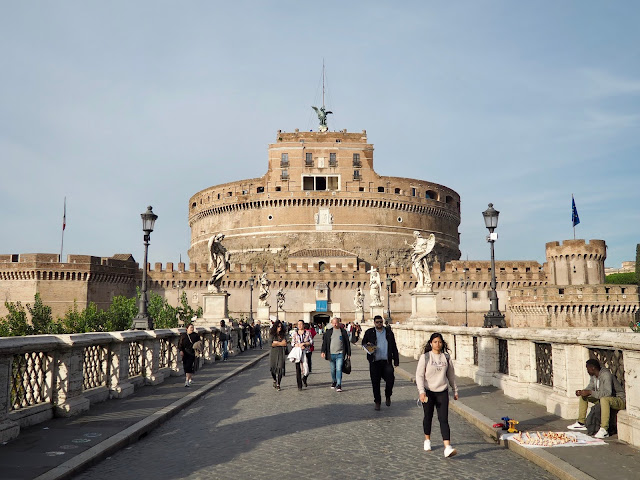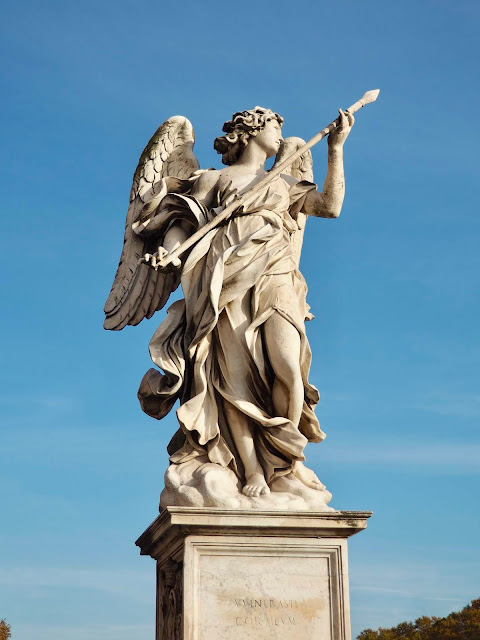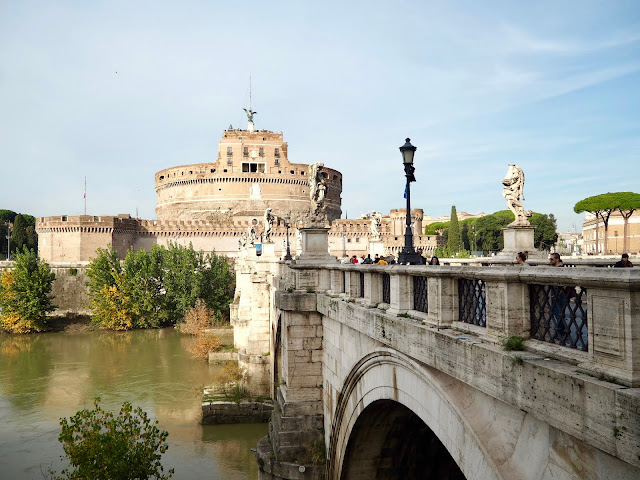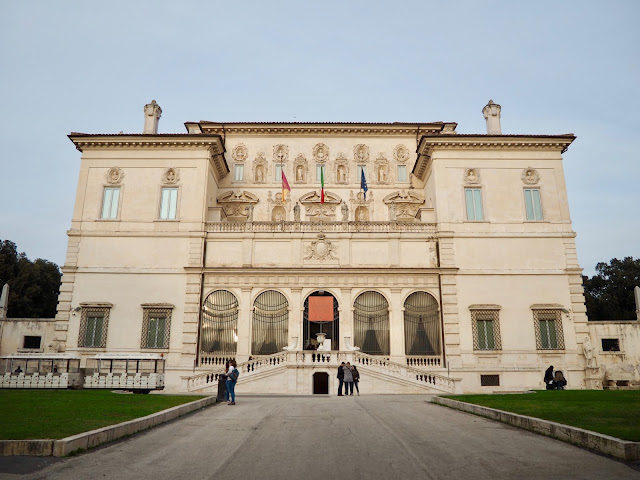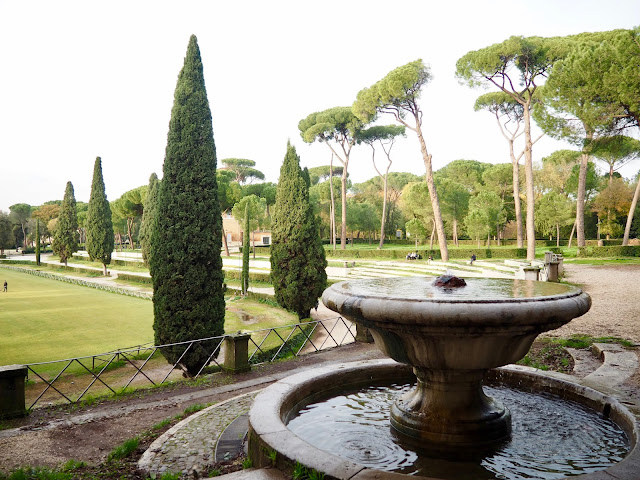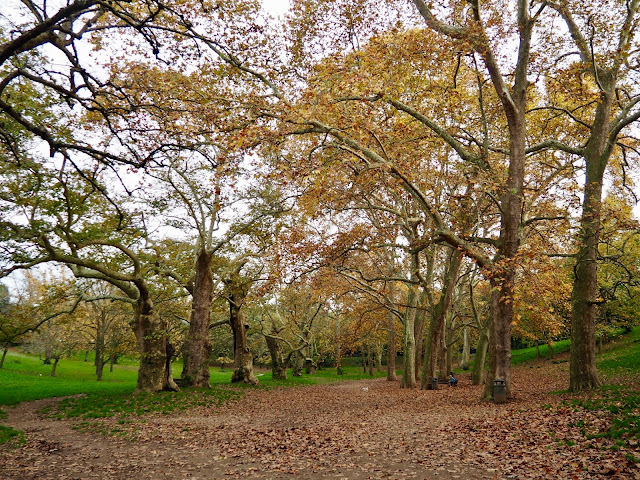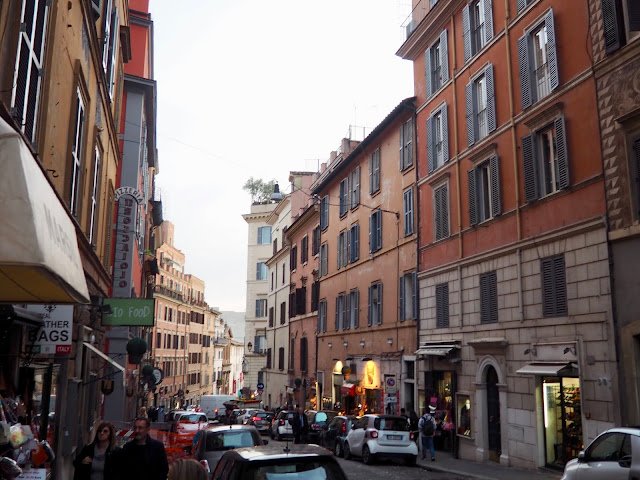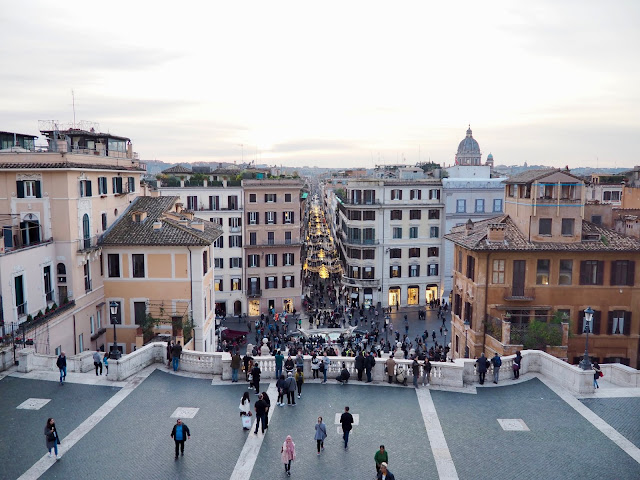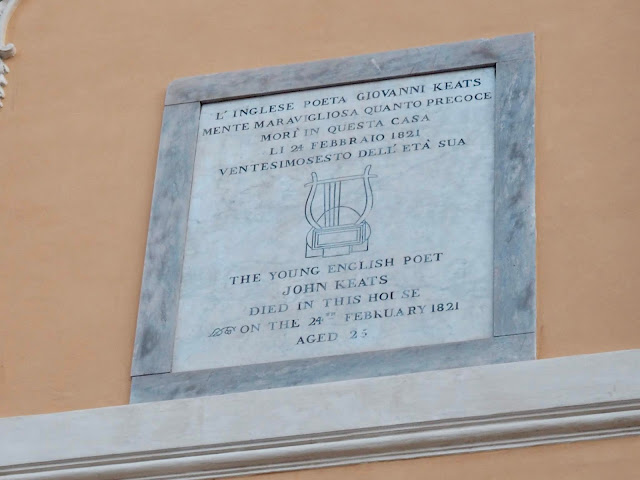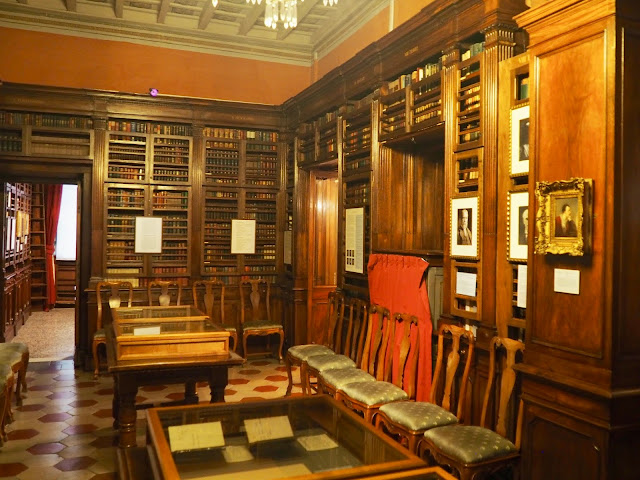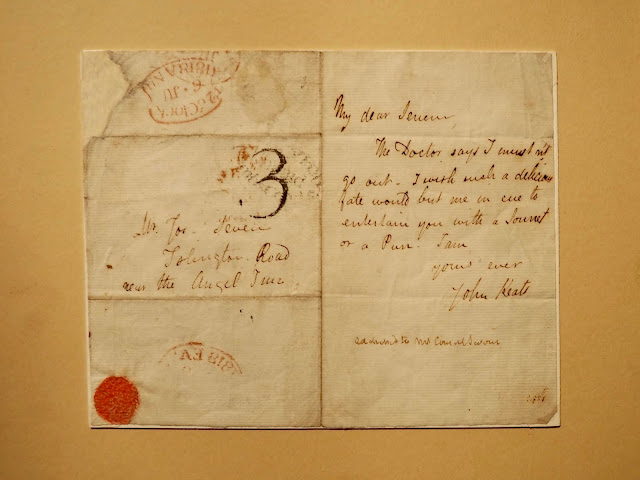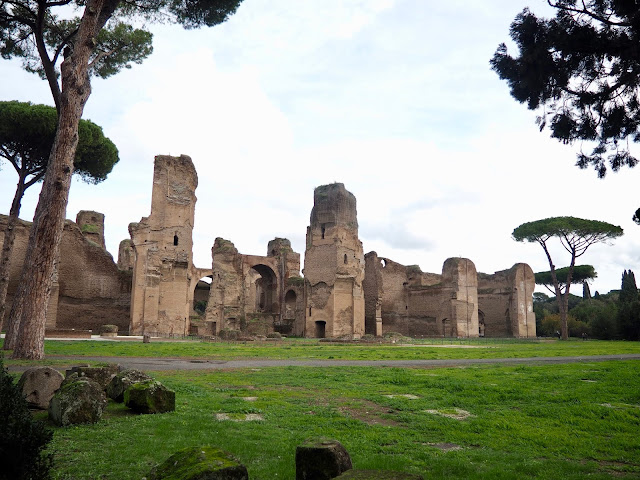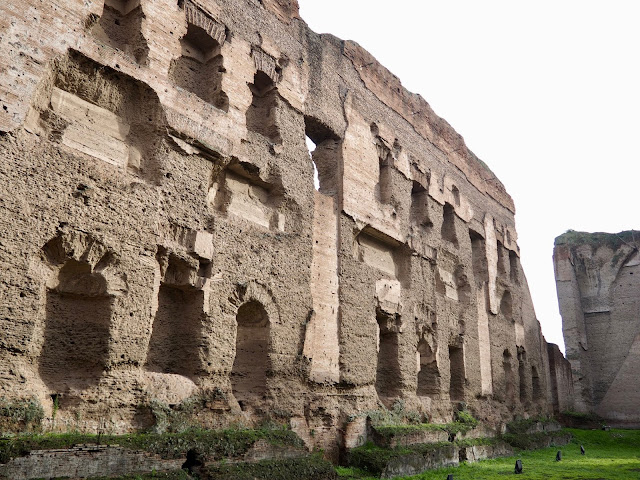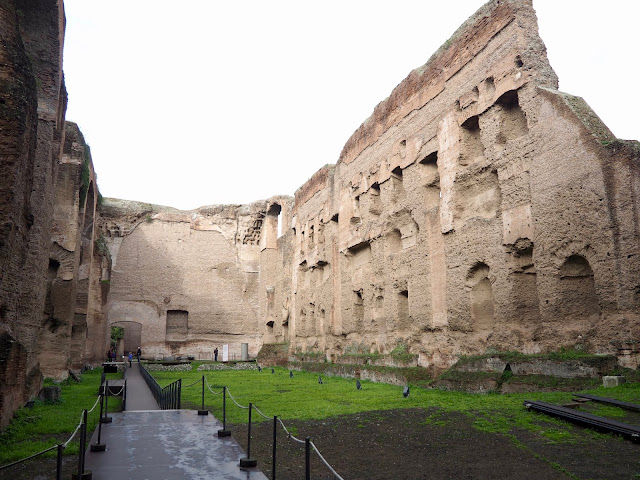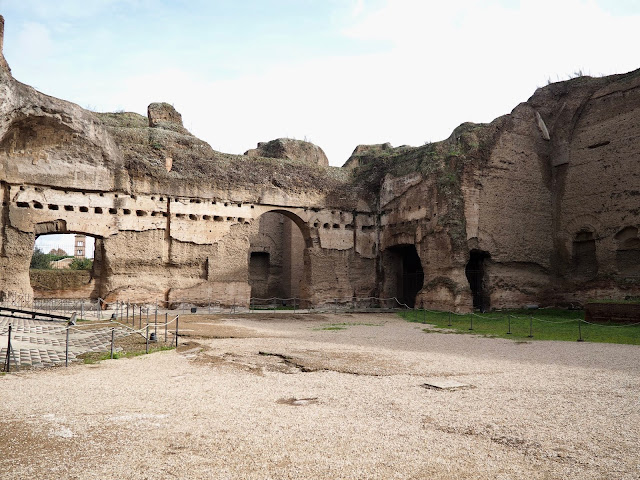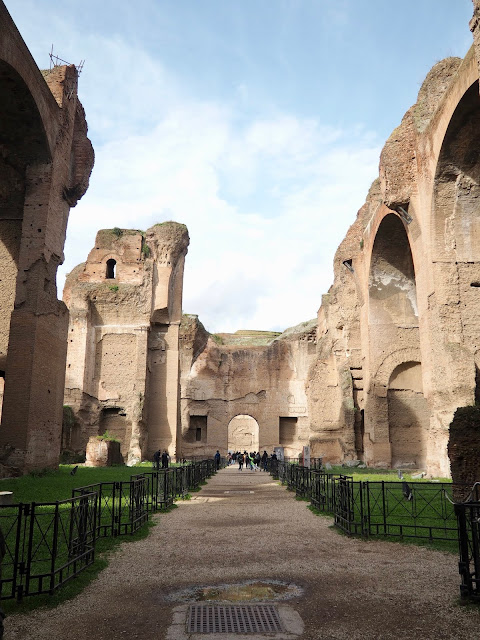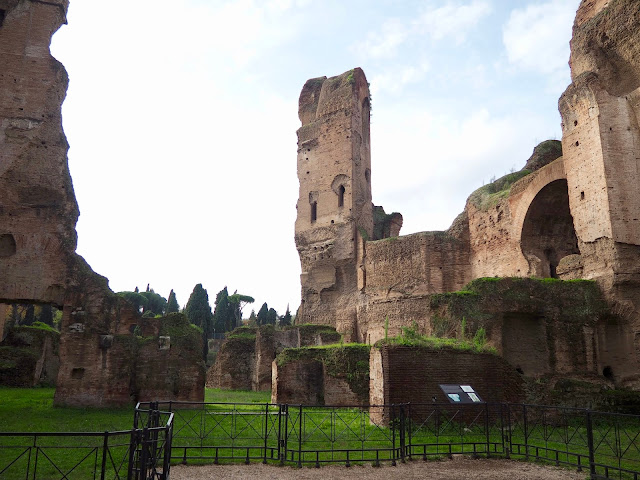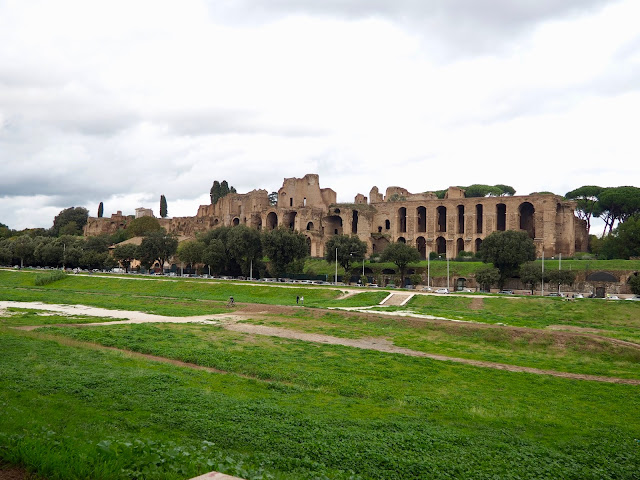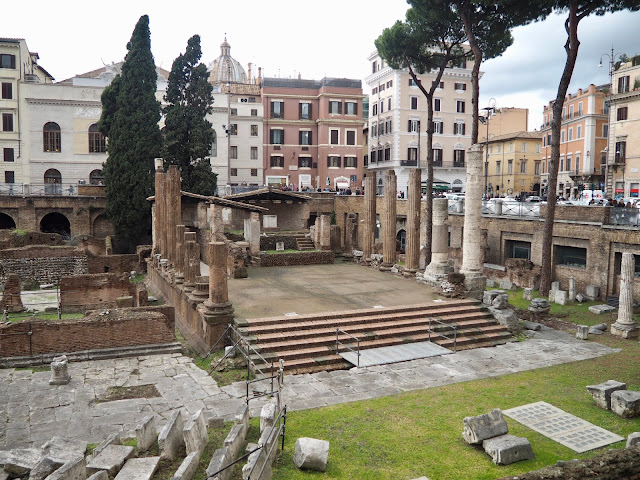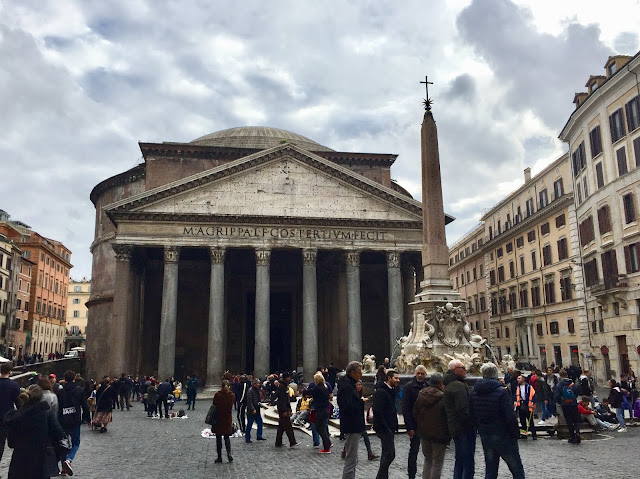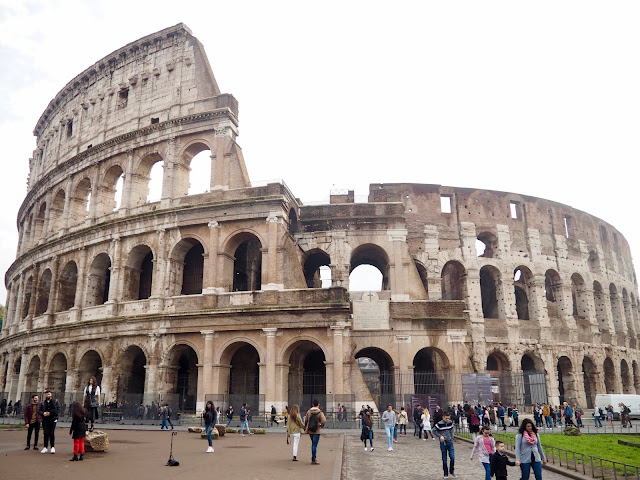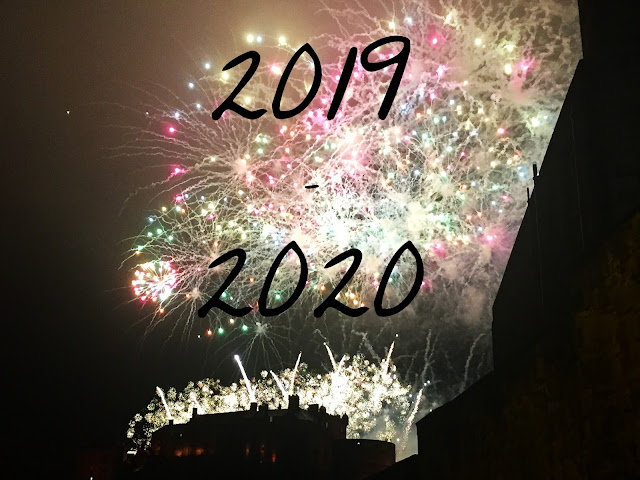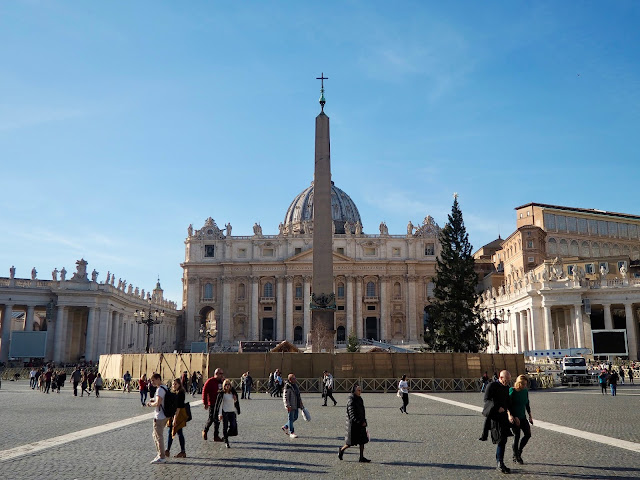
Rome City Break | Part 2
Ok so this post is arriving much later than expected, and some of the Christmas and New Year posts I’ve writing in previous years are not going to materialise this time. Life got very busy in the last month or two, and blogging fell aside – hopefully I’ll write more about that soon, as I still want to write my 2019 review post, and an update/look forward for 2020. For now, there’s still the second half of my Rome trip last month to cover! We were there for four days, so part 1 featured the first two days, exploring the historic city centre and the Coliseum. There’s still another day and a half (before our evening flight home) to cover!
Day Three
We made our way back down the dome after that, and you actually exit into the basilica itself. I remembered it being big, from my last visit to Rome, but I had forgotten just how big it is. It is truly massive, and so ornately decorated, everything covered in statues and carvings, gold and marble. It was all so lavish – a far cry from the simple, Presbyterian churches we are used to in most of Scotland. The central altar – the papal altar, where the Pope celebrates Mass – has a huge bronze canopy over it, topped with four angel statues, created by Bernini. It stands the tomb of St Peter, where he is believed to be buried after being crucified, and the Basilica was built on the site and named for him. Although this is the centrepiece of the church, every corner and wall has something splendid to see, with so many other altars around the sides. It is mind-boggling just how much work and expense went into this building! I later learned that it took 120 years to complete the project, from 1506 until 1626, so it was no easy task.
After we left, we ended out of the Piazza San Pietro again, and followed the road straight down in front of us. We were aiming for the Castel Sant’Angelo eventually, but we stopped off in a cafe for lunch first, where I continued to eat as much pasta as I possibly could in four days! We had walked a lot already, and crammed plenty into the morning – though it was about 2pm by this point – so we were definitely in need of a break. The Castel Sant’Angelo is also known as Hadrian’s Tomb, one of the ancient Roman emperors. We didn’t go inside, we just walked along the river beside it, as I had read online that there wasn’t a huge amount to see in there. We also wanted to check out the bridge next to it, the Ponte Sant’Angelo. The tomb and bridge themselves were both built in the 2nd century AD, but their current names are in reference to the angel statues added to the bridge in the 17th century. It was Bernini again who designed them, but he only complete two out of the total ten himself. Each angel is unique, holding one of the instruments of Passion. We wandered over the bridge, admiring the views of St Peter’s Basilica and the Castel along the way.
Then, we hopped into a taxi and made our way over to Villa Borghese. My sister is very interested in the Medici family (after watching the Netflix show), so we got dropped off outside the huge, imposing Villa Medici. Today it is used by the French Academy, so there isn’t a great amount to see or learn about the Medici themselves, and you have to do paid, guided tours at specific times, so we only looked at it from the outside. The Villa Borghese is a large park, on the hilltop just north east of the historic city centre. We sent an hour or so just having a leisurely wander through it, taking a break from the city streets and all the history we’d been absorbing in the last few days. The Galleria Borghese is here as well, a famous art gallery, though we opted not to go inside, as it was a bit expensive, and we didn’t know enough about the art and artists inside to feel like it would be worth it for us. We did a slow loop around the park, before heading back downhill again. We wound up at the top of the Spanish Steps, looking down over the historic city centre again – we’d passed the steps several times in the last few days, but hadn’t actually been up them yet!
I separated from everyone else at this point, as I wanted to visit the Keats-Shelley Museum, but the rest of my family weren’t bothered about it. The museum is right next to the Spanish Steps, in the house where Keats spent his final days, so it made sense for me to head in then. Keats is one of my favourite poets, from the Romantic era, and he died at just 25 years old, after contracting tuberculosis. He had come to Rome for his health, to a warmer climate than Britain, but actually died in this house, in 1821. The room where he died has been recreated with similar furniture (the originals had to be burned, because of the disease), and the rest of the rooms are filled with artefacts about his life, and his fellow poet, Shelley, as well as Lord Byron as well. These men all travelled and worked in Rome, so there is a strong link to the city for the Romantic poetry era. I haven’t read as many works by the other two, but I’m familiar with them, as Romantic poetry in general is a favourite of mine. It was rather surreal to know I was standing in the room where Keats lived and died! It’s a small museum, but I explored it thoroughly, before heading out again to meet up with the rest of my family.
We wandered back through the city centre, ending up in Piazza Navona again, where we saw the fountain lit up at night. Although it can be a bit touristy around here, this was our final night in Rome, and it’s a lively area to sit outdoors, so we chose a restaurant here for our last dinner. We also ended up getting four cocktails, each one inspired by one of the four rivers in the fountain, which I thought was a fun idea!
Day Four
You May Also Like

Top Five Hong Kong Restaurants
19 March 2016
Shanghai Highlights, Part 1 | China
6 May 2017